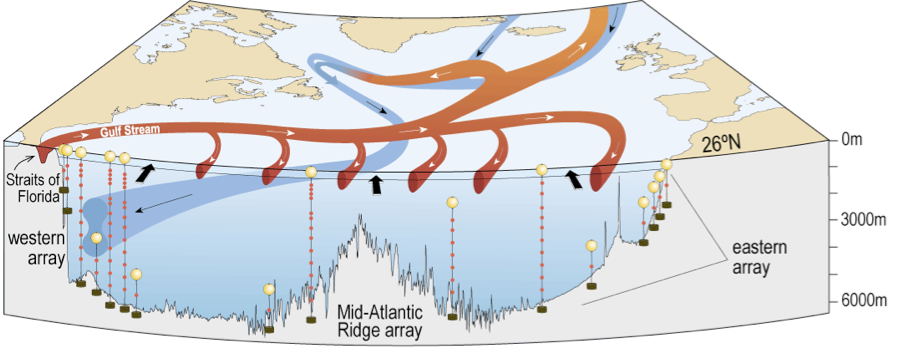Presentation given by Dr. Eleanor Frajka-Williams in Taliarte 6th March 2020
As programmed, on 6th March in Taliarte, Dr. Eleanor Frajka-Williams was able to deliver a very interesting presentation entitled "Measuring the large-scale ocean circulation: Variability, connectivity and new approaches", during which she highlighted some of the research work carried out in her latest campaigns, what she and her team thought might be the results of the activities undertaken and what information was in fact revealed at the end of the study. Once more, here is her summary.
The large-scale meridional overturning circulation (MOC) has been measured at 26°N by the RAPID/MOCHA arrays since 2004, producing continuous records of the variability of overturning transports. From these, we have learned that (i) the overturning fluctuates on timescales of days to a decade, (ii) heat transport variability is dominated by geostrophic volume transport, (iii) interannual variations are larger than those seen in most coupled climate models, (iv) low frequency variability appears consistent with our understanding of the Atlantic Multidecadal Variability (AMV). With the deployment of observing arrays at other latitudes (16°N, OSNAP, 34.5°S and 45°N), we can begin to address questions about the meridional connectivity of the large-scale ocean circulation. A brief overview of the findings from RAPID 26°N was presented, followed by efforts using new observational approaches to broaden our understanding of the large-scale overturning.


